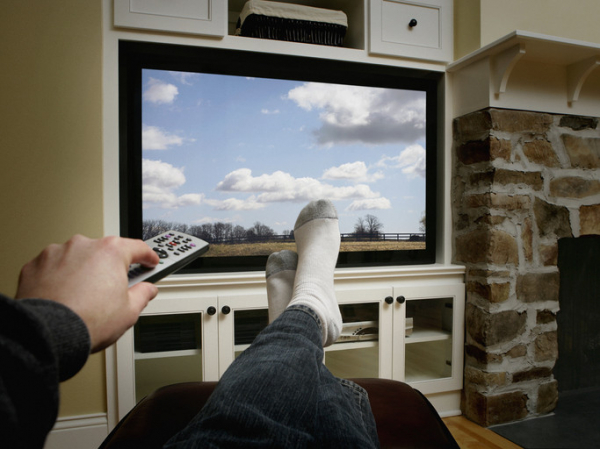
Stepping up activity if winter slowed you down

If you've been cocooning due to winter’s cold, who can blame you? But a lack of activity isn't good for body or mind during any season. And whether you're deep in the grip of winter or fortunate to be basking in signs of spring, today is a good day to start exercising. If you’re not sure where to start — or why you should — we’ve shared tips and answers below.
Moving more: What’s in it for all of us?
We’re all supposed to strengthen our muscles at least twice a week and get a total at least 150 minutes of weekly aerobic activity (the kind that gets your heart and lungs working). But fewer than 18% of U.S. adults meet those weekly recommendations, according to the CDC.
How can choosing to become more active help? A brighter mood is one benefit: physical activity helps ease depression and anxiety, for example. And being sufficiently active — whether in short or longer chunks of time — also lowers your risk for health problems like
- heart disease
- stroke
- diabetes
- cancer
- brain shrinkage
- muscle loss
- weight gain
- poor posture
- poor balance
- back pain
- and even premature death.
What are your exercise obstacles?
Even when we understand these benefits, a range of obstacles may keep us on the couch.
Don’t like the cold? Have trouble standing, walking, or moving around easily? Just don’t like exercise? Don’t let obstacles like these stop you anymore. Try some workarounds.
- If it’s cold outside: It’s generally safe to exercise when the mercury is above 32° F and the ground is dry. The right gear for cold doesn’t need to be fancy. A warm jacket, a hat, gloves, heavy socks, and nonslip shoes are a great start. Layers of athletic clothing that wick away moisture while keeping you warm can help, too. Consider going for a brisk walk or hike, taking part in an orienteering event, or working out with battle ropes ($25 and up) that you attach to a tree.
- If you have mobility issues: Most workouts can be modified. For example, it might be easier to do an aerobics or weights workout in a pool, where buoyancy makes it easier to move and there’s little fear of falling. Or try a seated workout at home, such as chair yoga, tai chi, Pilates, or strength training. You’ll find an endless array of free seated workout videos on YouTube, but look for those created by a reliable source such as Silver Sneakers, or a physical therapist, certified personal trainer, or certified exercise instructor. Another option is an adaptive sports program in your community, such as adaptive basketball.
- If you can’t stand formal exercise: Skip a structured workout and just be more active throughout the day. Do some vigorous housework (like scrubbing a bathtub or vacuuming) or yard work, climb stairs, jog to the mailbox, jog from the parking lot to the grocery store, or do any activity that gets your heart and lungs working. Track your activity minutes with a smartphone (most devices come with built-in fitness apps) or wearable fitness tracker ($20 and up).
- If you’re stuck indoors: The pandemic showed us there are lots of indoor exercise options. If you’re looking for free options, do a body-weight workout, with exercises like planks and squats; follow a free exercise video online; practice yoga or tai chi; turn on music and dance; stretch; or do a resistance band workout. Or if it’s in the budget, get a treadmill, take an online exercise class, or work online with a personal trainer. The American Council on Exercise has a tool on its website to locate certified trainers in your area.
Is it hard to find time to exercise?
The good news is that any amount of physical activity is great for health. For example, a 2022 study found that racking up 15 to 20 minutes of weekly vigorous exercise (less than three minutes per day) was tied to lower risks of heart disease, cancer, and early death.
"We don't quite understand how it works, but we do know the body's metabolic machinery that imparts health benefits can be turned on by short bouts of movement spread across days or weeks," says Dr. Aaron Baggish, founder of Harvard-affiliated Massachusetts General Hospital's Cardiovascular Performance Program and an associate professor of medicine at Harvard Medical School.
And the more you exercise, Dr. Baggish says, the more benefits you accrue, such as better mood, better balance, and reduced risks of diabetes, high blood pressure, high cholesterol, and cognitive decline.
What’s the next step to take?
For most people, increasing activity is doable. If you have a heart condition, poor balance, muscle weakness, or you’re easily winded, talk to your doctor or get an evaluation from a physical therapist.
And no matter which activity you select, ease into it. When you’ve been inactive for a while, your muscles are vulnerable to injury if you do too much too soon.
“Your muscles may be sore initially if they are being asked to do more,” says Dr. Sarah Eby, a sports medicine specialist at Harvard-affiliated Spaulding Rehabilitation Hospital. “That’s normal. Just be sure to start low, and slowly increase your duration and intensity over time. Pick activities you enjoy and set small, measurable, and attainable goals, even if it’s as simple as walking five minutes every day this week.”
Remember: the aim is simply exercising more than you have been. And the more you move, the better.
About the Author

Heidi Godman, Executive Editor, Harvard Health Letter
Heidi Godman is the executive editor of the Harvard Health Letter. Before coming to the Health Letter, she was an award-winning television news anchor and medical reporter for 25 years. Heidi was named a journalism fellow … See Full Bio View all posts by Heidi Godman
About the Reviewer
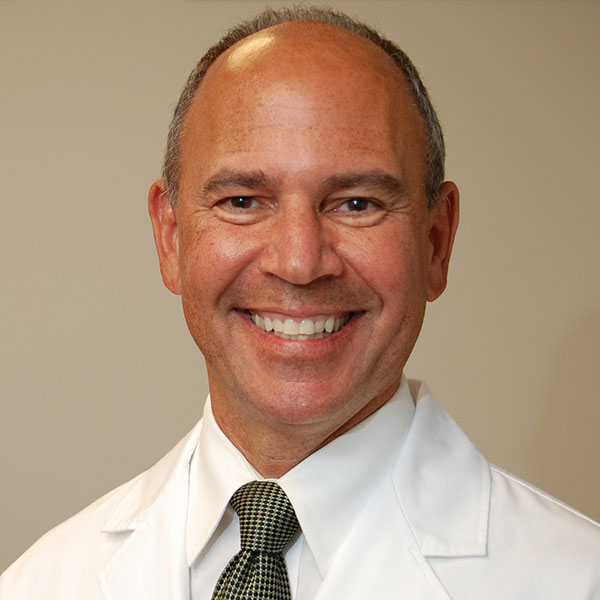
Howard E. LeWine, MD, Chief Medical Editor, Harvard Health Publishing
Dr. Howard LeWine is a practicing internist at Brigham and Women’s Hospital in Boston, Chief Medical Editor at Harvard Health Publishing, and editor in chief of Harvard Men’s Health Watch. See Full Bio View all posts by Howard E. LeWine, MD
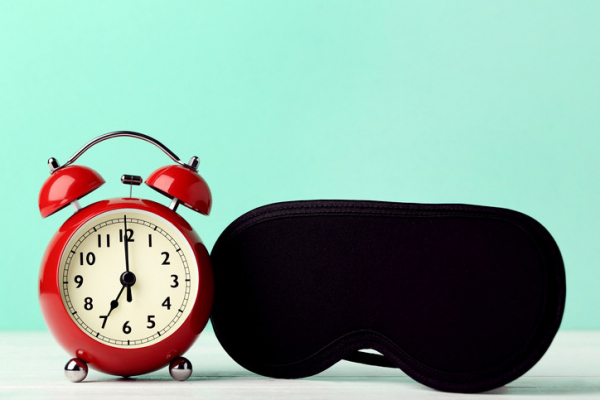
Does sleeping with an eye mask improve learning and alertness?

All of us have an internal clock that regulates our circadian rhythms, including when we sleep and when we are awake. And light is the single most important factor that helps establish when we should feel wakeful (generally during the day) and when we should feel sleepy (typically at night).
So, let me ask you a personal question: just how dark is your bedroom? To find out why that matters — and whether sleeping in an eye mask is worthwhile — read on.
How is light related to sleep?
Our circadian system evolved well before the advent of artificial light. As anyone who has been to Times Square can confirm, just a few watts of power can trick the brain into believing that it is daytime at any time of night. So, what’s keeping your bedroom alight?
- A tablet used in bed at night to watch a movie is more than 100 times brighter than being outside when there is a full moon.
- Working on or watching a computer screen at night is about 10 times brighter than standing in a well-lit parking lot.
Light exposure at night affects the natural processes that help prepare the body for sleep. Specifically, your pineal gland produces melatonin in response to darkness. This hormone is integral for the circadian regulation of sleep.
What happens when we are exposed to light at night?
Being exposed to light at night suppresses melatonin production, changing our sleep patterns. Compared to sleeping without a night light, adults who slept next to a night light had shallower sleep and more frequent arousals. Even outdoor artificial light at night, such as street lamps, has been linked with getting less sleep.
But the impact of light at night is not limited to just sleep. It’s also associated with increased risk of developing depressive symptoms, obesity, diabetes, and high blood pressure. Light exposure misaligned with our circadian rhythms — that is, dark during the day and light at night — is one reason scientists believe that shift work puts people at higher risk for serious health problems.
Could sleeping with an eye mask help?
Researchers from Cardiff University in the United Kingdom conducted a series of experiments to see if wearing an eye mask while sleeping at night could improve certain measures of learning and alertness.
Roughly 90 healthy young adults, 18 to 35 years of age, alternated between sleeping while wearing an eye mask or being exposed to light at night. They recorded their sleep patterns in a sleep diary.
In the first part of the study, participants wore an intact eye mask for a week. Then during the next week, they wore an eye mask with a hole exposing each eye so that the mask didn't block the light.
After sleeping with no light exposure (wearing the intact eye mask) and with minimal light exposure (the eye mask with the holes), participants completed three cognitive tasks on days six and seven of each week:
- First was a paired-associate learning task. This helps show how effectively a person can learn new associations. Here the task was learning related word pairs. Participants performed better after wearing an intact eye mask during sleep in the days leading up to the test than after being exposed to light at night.
- Second, the researchers administered a psychomotor vigilance test, which assesses alertness. Blocking light at night also improved reaction times on this task.
- Finally, a motor skill learning test was given, which involved tapping a five-digit sequence in the correct order. For this task, there was no difference in performance whether participants had worn an intact eye mask or been exposed to light at night.
What else did the researchers learn?
No research study is ever perfect, so it is important to take the conclusions above with a grain of salt.
According to sleep diary data, there was no difference in the amount of sleep, nor in their perceptions of sleep quality, regardless of whether people wore an eye mask or not.
Further, in a second experiment with about 30 participants, the researchers tracked sleep objectively using a monitoring device called the Dreem headband. They found no changes to the structure of sleep — for example, how much time participants spent in REM sleep — when wearing an eye mask.
Should I rush out to buy an eye mask before an important meeting or exam?
If you decide to try using an eye mask, you probably don’t need to pay extra for overnight shipping. Instead, follow a chronobiologist’s rule of thumb: “bright days, dark nights.”
- During the daytime, get as much natural daylight as you possibly can: go out to pick up your morning bagel from a local bakery, take a short walk during your afternoon lull at work.
- In the evening, reduce your exposure to electronic devices such as your cell phone, and use the night-dimming modes on these devices. Make sure that you turn off all unnecessary lights. Finally, try to make your bedroom as dark as possible when you go to bed. This could mean turning the alarm clock next to your bed away from you or covering up the light on a humidifier.
Of course, you might decide a well-fitted, comfortable eye mask is a useful addition to your light hygiene toolkit. Most cost $10 to $20, so you may find yourself snoozing better and improving cognitive performance for the price of a few cups of coffee.
About the Author

Eric Zhou, PhD, Contributor
Eric Zhou, PhD, is an assistant professor at Harvard Medical School. His research focuses on how we can better understand and treat sleep disorders in both pediatric and adult populations, including those with chronic illnesses. Dr. … See Full Bio View all posts by Eric Zhou, PhD

What is a tongue-tie? What parents need to know

The tongue is secured to the front of the mouth partly by a band of tissue called the lingual frenulum. If the frenulum is short, it can restrict the movement of the tongue. This is commonly called a tongue-tie.
Children with a tongue-tie can’t stick their tongue out past their lower lip, or touch their tongue to the top of their upper teeth when their mouth is open. When they stick out their tongue, it looks notched or heart-shaped. Since babies don’t routinely stick out their tongues, a baby’s tongue may be tied if you can’t get a finger underneath the tongue.
How common are tongue-ties?
Tongue-ties are common. It’s hard to say exactly how common, as people define this condition differently. About 8% of babies under age one may have at least a mild tongue-tie.
Is it a problem if the tongue is tied?
This is really important: tongue-ties are not necessarily a problem. Many babies, children, and adults have tongue-ties that cause them no difficulties whatsoever.
There are two main ways that tongue-ties can cause problems:
- They can cause problems with breastfeeding by making it hard for some babies to latch on well to the mother’s nipple. This causes difficulty with feeding for the baby and sore nipples for the mother. It doesn’t happen to all babies with a tongue-tie; many of them can breastfeed successfully. Tongue-ties are not to blame for gassiness or fussiness in a breastfed baby who is gaining weight well. Babies with tongue-ties do not have problems with bottle-feeding.
- They can cause problems with speech. Some children with tongue-ties may have difficulty pronouncing certain sounds, such as t, d, z, s, th, n, and l. Tongue-ties do not cause speech delay.
What should you do if think your baby or child has a tongue-tie?
If you think that your newborn is not latching well because of a tongue-tie, talk to your doctor. There are many, many reasons why a baby might not latch onto the breast well. Your doctor should take a careful history of what has been going on, and do a careful examination of your baby to better understand the situation.
You should also have a visit with a lactation specialist to get help with breastfeeding — both because there are lots of reasons why babies have trouble with latching on, and also because many babies with a tongue-tie can nurse successfully with the right techniques and support.
Talk to your doctor if you think that a tongue-tie could be causing problems with how your child pronounces words. Many children just take some time to learn to pronounce certain sounds. It is also a good idea to have an evaluation by a speech therapist before concluding that a tongue-tie is the problem.
What can be done about a tongue-tie?
When necessary, a doctor can release a tongue-tie using a procedure called a frenotomy. A frenotomy can be done by simply snipping the frenulum, or it can be done with a laser.
However, nothing should be done about a tongue-tie that isn’t causing problems. While a frenotomy is a relatively minor procedure, complications such as bleeding, infection, or feeding difficulty sometimes occur. So it’s never a good idea to do it just to prevent problems in the future. The procedure should only be considered if the tongue-tie is clearly causing trouble.
It’s also important to know that clipping a tongue-tie doesn’t always solve the problem, especially with breastfeeding. Studies do not show a clear benefit for all babies or mothers. That’s why it’s important to work with a lactation expert before even considering a frenotomy.
If a newborn with a tongue-tie isn’t latching well despite strong support from a lactation expert, then a frenotomy should be considered, especially if the baby is not gaining weight. If it is done, it should be done early on and by someone with training and experience in the procedure.
What else should parents know about tongue-tie procedures?
Despite the fact that the evidence for the benefits of frenotomy is murky, many providers are quick to recommend them. If one is being recommended for your child, ask questions:
- Make sure you know exactly why it is being recommended.
- Ask whether there are any other options, including waiting.
- Talk to other health care providers on your child’s care team, or get a second opinion.
About the Author

Claire McCarthy, MD, Senior Faculty Editor, Harvard Health Publishing
Claire McCarthy, MD, is a primary care pediatrician at Boston Children’s Hospital, and an assistant professor of pediatrics at Harvard Medical School. In addition to being a senior faculty editor for Harvard Health Publishing, Dr. McCarthy … See Full Bio View all posts by Claire McCarthy, MD
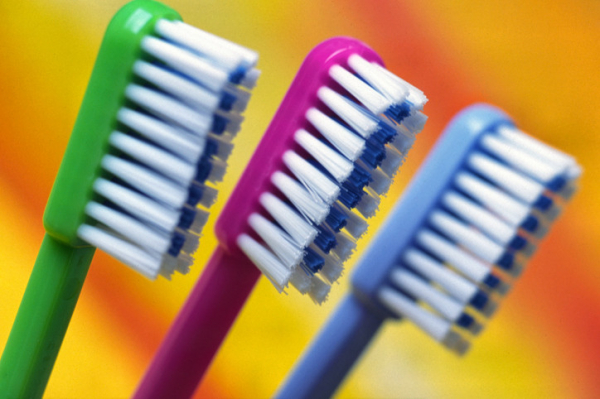
One more reason to brush your teeth?

Maybe we should add toothbrushes to the bouquet of flowers we bring to friends and family members in the hospital — and make sure to pack one if we wind up there ourselves.
New Harvard-led research published online in JAMA Internal Medicine suggests seriously ill hospitalized patients are far less likely to develop hospital-acquired pneumonia if their teeth are brushed twice daily. They also need ventilators for less time, are able to leave the intensive care unit (ICU) more quickly, and are less likely to die in the ICU than patients without a similar toothbrushing regimen.
Why would toothbrushing make any difference?
“It makes sense that toothbrushing removes the bacteria that can lead to so many bad outcomes,” says Dr. Tien Jiang, an instructor in oral health policy and epidemiology at Harvard School of Dental Medicine, who wasn’t involved in the new research. “Plaque on teeth is so sticky that rinsing alone can’t effectively dislodge the bacteria. Only toothbrushing can.”
Pneumonia consistently falls among the leading infections patients develop while hospitalized. According to the Agency for Healthcare Research and Quality, each year more than 633,000 Americans who go to the hospital for other health issues wind up getting pneumonia. Air sacs (alveoli) in one or both lungs fill with fluid or pus, causing coughing, fever, chills, and trouble breathing. Nearly 8% of those who develop hospital-acquired pneumonia die from it.
How was the study done?
The researchers reviewed 15 randomized trials encompassing nearly 2,800 patients. All of the studies compared outcomes among seriously ill hospitalized patients who had daily toothbrushing to those who did not.
- 14 of the studies were conducted in ICUs
- 13 involved patients who needed to be on a ventilator
- 11 used an antiseptic rinse called chlorhexidine gluconate for all patients: those who underwent toothbrushing and those who didn’t.
What were the findings?
The findings were compelling and should spur efforts to standardize twice-daily toothbrushing for all hospitalized patients, Dr. Jiang says.
Study participants who were randomly assigned to receive twice-daily toothbrushing were 33% less likely to develop hospital-acquired pneumonia. Those effects were magnified for people on ventilators, who needed this invasive breathing assistance for less time if their teeth were brushed.
Overall, study participants were 19% less likely to die in the ICU — and able to graduate from intensive care faster — with the twice-daily oral regimen.
How long patients stayed in the hospital or whether they were treated with antibiotics while there didn’t seem to influence pneumonia rates. Also, toothbrushing three or more times daily didn’t translate into additional benefits over brushing twice a day.
What were the study’s strengths and limitations?
One major strength was compiling years of smaller studies into one larger analysis — something particularly unusual in dentistry, Dr. Jiang says. “From a dental point of view, having 15 randomized controlled trials is huge. It’s very hard to amass that big of a population in dentistry at this high a level of evidence,” she says.
But toothbrushing techniques may have varied among hospitals participating in the research. And while the study was randomized, it couldn’t be blinded — a tactic that would reduce the chance of skewed results. Because there was no way to conceal toothbrushing regimens, clinicians involved in the study likely knew their efforts were being tracked, which may have changed their behavior.
“Perhaps they were more vigilant because of it,” Dr. Jiang says.
How exactly can toothbrushing prevent hospital-acquired pneumonia?
It’s not complicated. Pneumonia in hospitalized patients often stems from breathing germs into the mouth — germs which number more than 700 different species, including bacteria, fungi, viruses and other microbes.
This prospect looms larger for ventilated patients, since the breathing tube inserted into the throat can carry bacteria farther down the airway. “Ventilated patients lose the normal way of removing some of this bacteria,” Dr. Jiang says. “Without that ventilator, we can sweep it out of our upper airways.”
How much does toothbrushing matter if you’re not hospitalized?
In case you think the study findings only pertain to people in the hospital, think again. Rather, this drives home how vital it is for everyone to take care of their teeth and gums.
About 300 diseases and conditions are linked in some way to oral health. Poor oral health triggers some health problems and worsens others. People with gum disease and tooth loss, for example, have higher rates of heart attacks. And those with uncontrolled gum disease typically have more difficulty controlling blood sugar levels.
About the Author

Maureen Salamon, Executive Editor, Harvard Women's Health Watch
Maureen Salamon is executive editor of Harvard Women’s Health Watch. She began her career as a newspaper reporter and later covered health and medicine for a wide variety of websites, magazines, and hospitals. Her work has … See Full Bio View all posts by Maureen Salamon
About the Reviewer
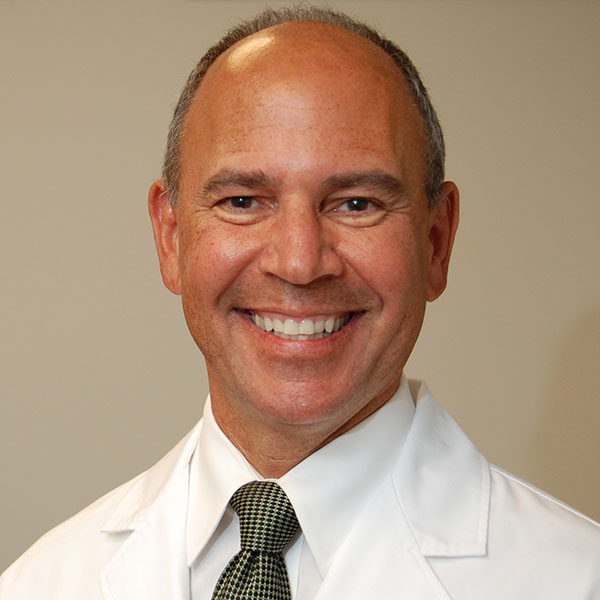
Howard E. LeWine, MD, Chief Medical Editor, Harvard Health Publishing
Dr. Howard LeWine is a practicing internist at Brigham and Women’s Hospital in Boston, Chief Medical Editor at Harvard Health Publishing, and editor in chief of Harvard Men’s Health Watch. See Full Bio View all posts by Howard E. LeWine, MD